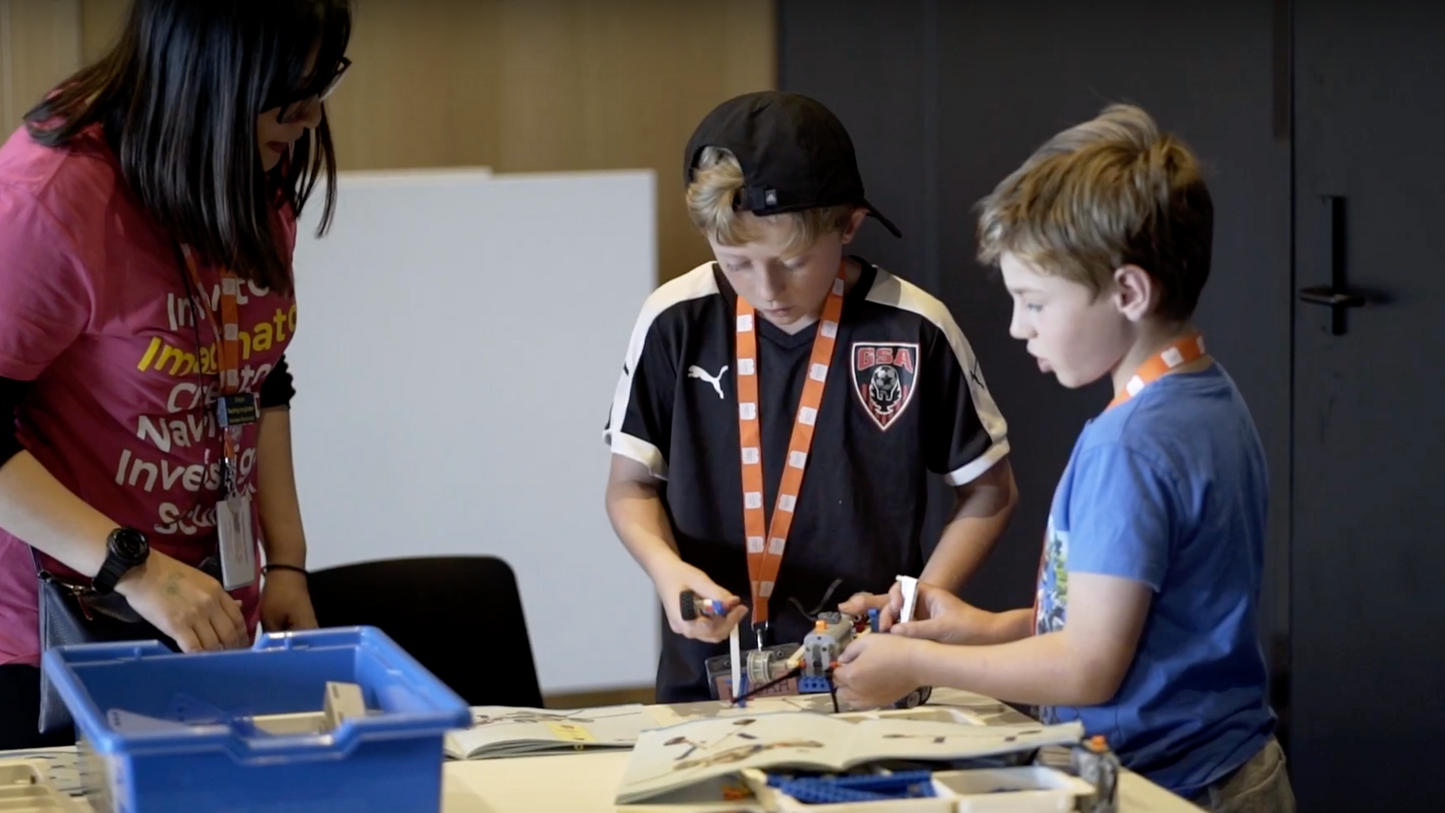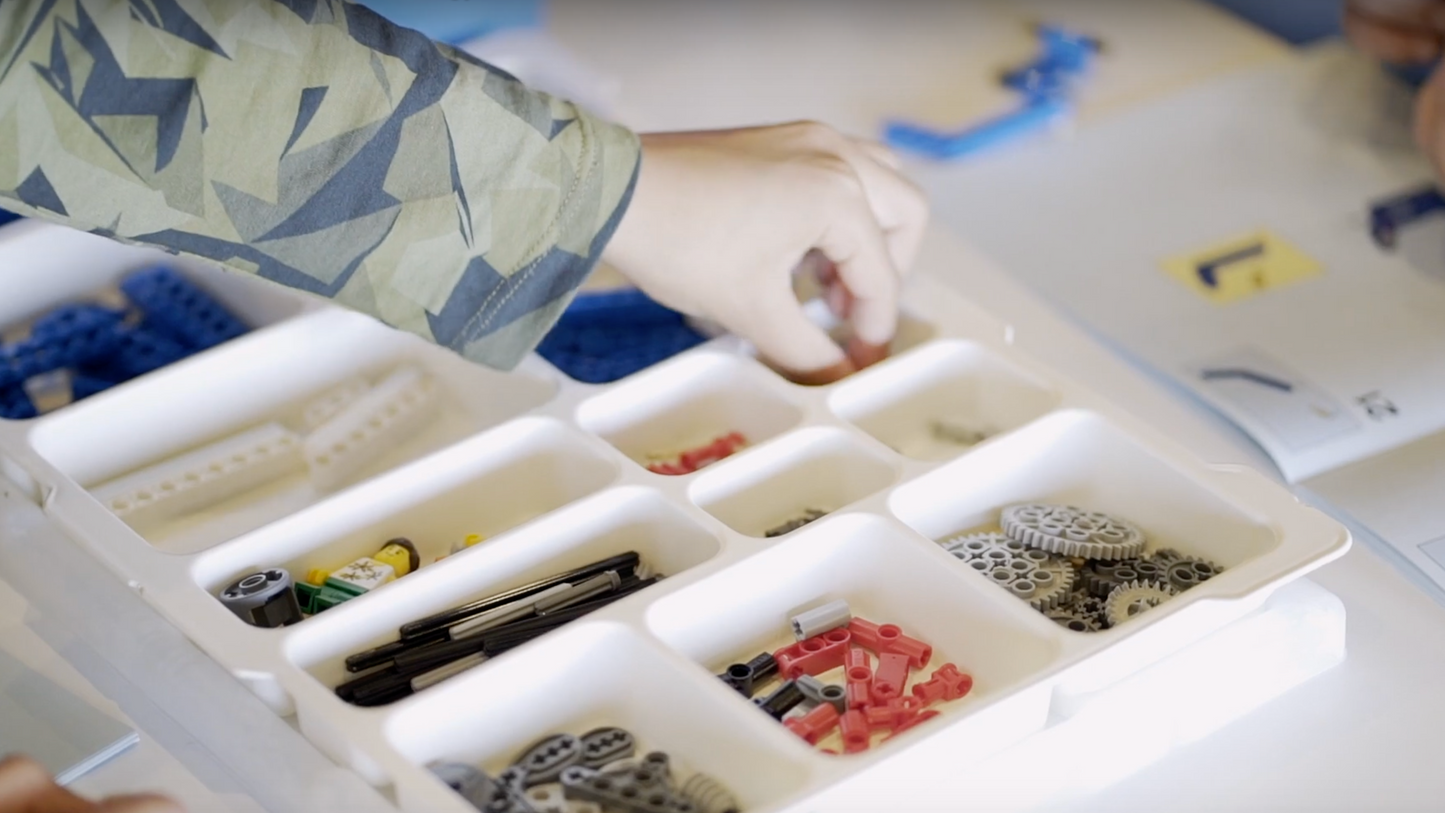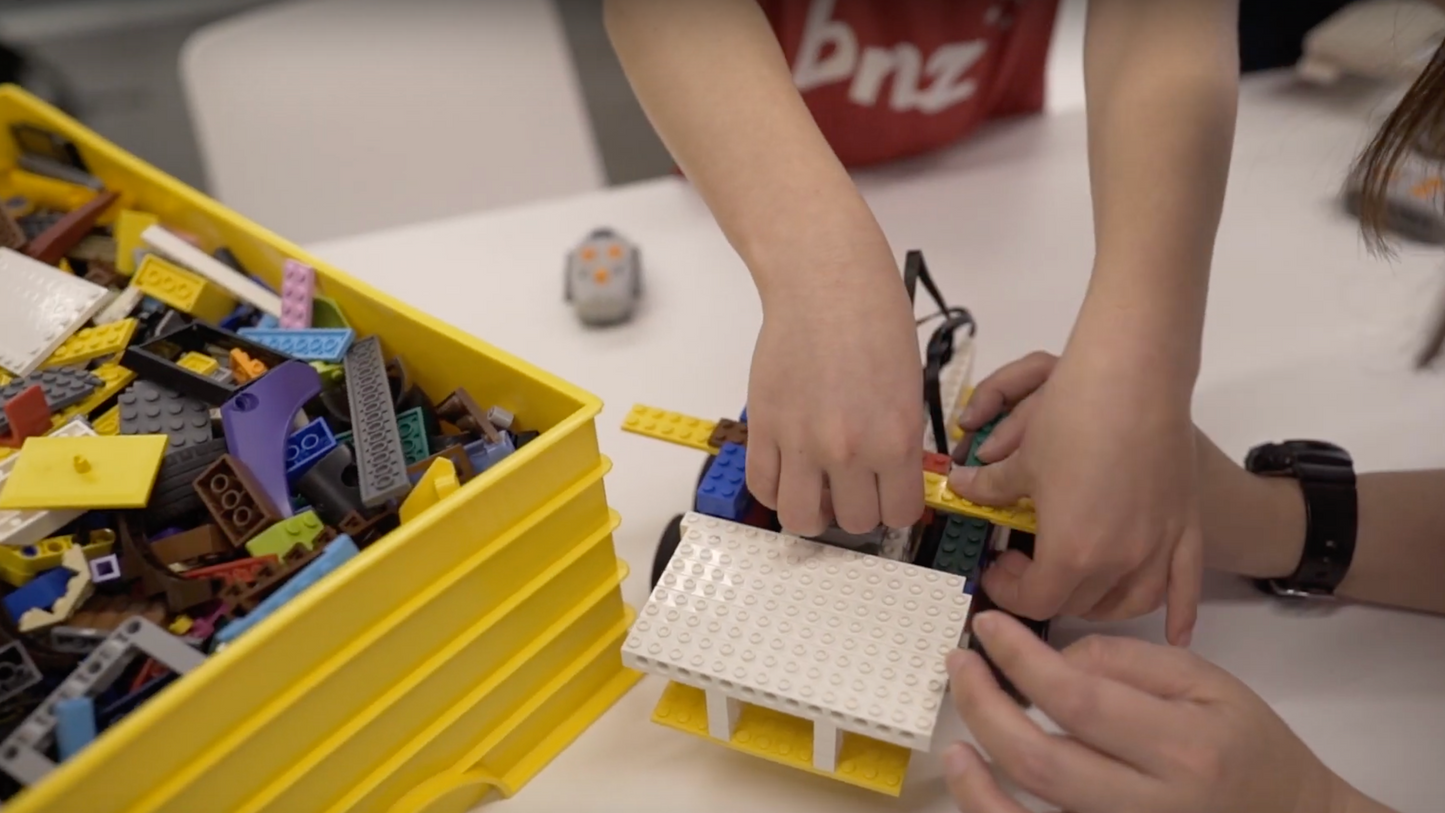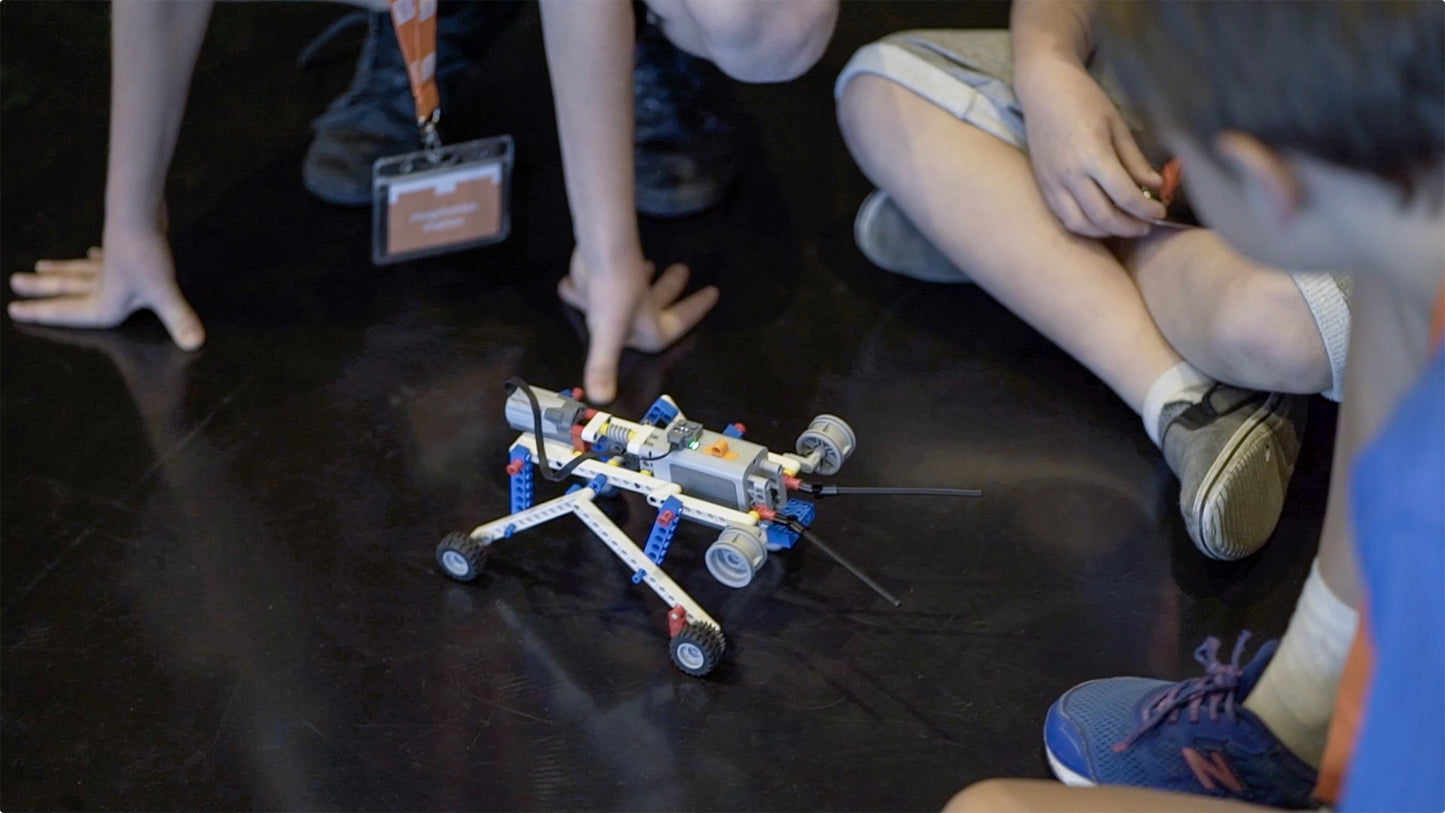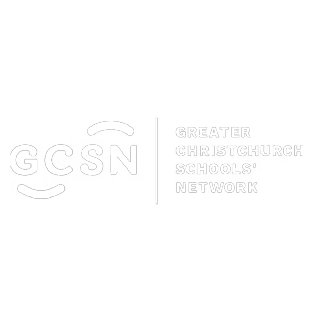Technic Contraptions
Discover mechanical concepts essential to life as we know it! Participants work in pairs, using gears, levers and pulleys to construct a model. Next, students explore how they could alter and improve the design to make it one-of-a-kind. Quick builders can complete more contraptions and explore what makes them tick.
Age range: 8-14 years old
Session Length: 90 minutes
Price: $6.50 per child per hour (Minimum $80 per hour)
Capacity: 20 children.
- - Pins, axles, beams, and gears can be used to create static and moving components in models.
- - We can improve on a design once we understand its purpose and how it works.
-
- We can use motors to make our mechanical models come to life!
In pairs, students work through pictorial instructions to complete one half each of an interesting machine. Students are encouraged to improve on their contraption once they have finished it. Builds available include a two-speed car, a windmill, a tractor, a lawnmower and a puppy!
We are learning to:
- - Follow pictorial instructions
- - Work effectively in pairs
- - Understand simple machines
- - Use levers, pivots, and axles to create moving models
- - Improve and expand on an existing design
Science:
-
Nature of Science: Investigating in Science (Levels 3-4):
-
- Build on prior experiences, working together to share and examine their own and others’ knowledge. (Levels 3-4)
-
- Ask questions, find evidence, explore simple models, and carry out appropriate investigations to develop simple explanations. (Levels 3-4)
- Physical World: Physical Inquiry and Physics Concepts (Levels 3-5)
- - Explore, describe, and represent patterns and trends for everyday examples of physical phenomena, such as movement, forces, electricity and magnetism. For example, identify and describe the effect of forces (contact and non-contact) on the motion of objects. (Levels 3-4)
- - Identify and describe the patterns associated with physical phenomena found in simple everyday situations involving movement, forces, electricity and magnetism, light, sound, waves, and heat. For example, identify and describe energy changes and conservation of energy, simple electrical circuits, and the effect of contact and non-contact on the motion of objects. (Level 5)
Technology:
-
Nature of Technology: Characteristics of Technology (Levels 1-4)
-
- Understand that technology is purposeful intervention through design. (Level 1)
-
- Understand that technology both reflects and changes society and the environment and increases people’s capability. (Level 2)
-
- Understand how society and environments impact on and are influenced by technology in historical and contemporary contexts and that technological knowledge is validated by successful function. (Level 3)
-
- Understand how technological development expands human possibilities and how technology draws on knowledge from a wide range of disciplines. (Level 4)
-
Nature of Technology: Characteristics of Technological Outcomes (Levels 1-4) -
- Understand that technological outcomes are products or systems developed by people and have a physical nature and a functional nature. (Level 1)
-
- Understand that technological outcomes are developed through technological practice and have related physical and functional natures. (Level 2)
-
- Understand that technological outcomes are recognisable as fit for purpose by the relationship between their physical and functional natures. (Level 3)
-
- Understand that technological outcomes can be interpreted in terms of how they might be used and by whom and that each has a proper function as well as possible alternative functions. (Level 4)
Thinking:
Students consider how to improve their model, thinking creatively and critically to problem solve.
Using language, symbols and text:
Students follow pictorial and verbal instructions during the session.
Managing Self:
Students are expected to identify and use library-appropriate behaviours throughout the session.
Relating to Others:
Students need to share equipment and work collaboratively to complete a shared project.
Participating and contributing:
Students complete this session in pairs, with each student finishing one half of the model. Students must work collaboratively to put their model together and suggest and implement improvements to the simple design.
Share
